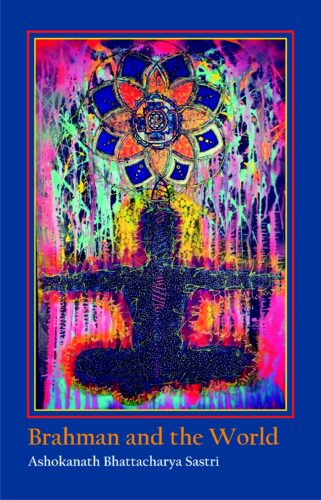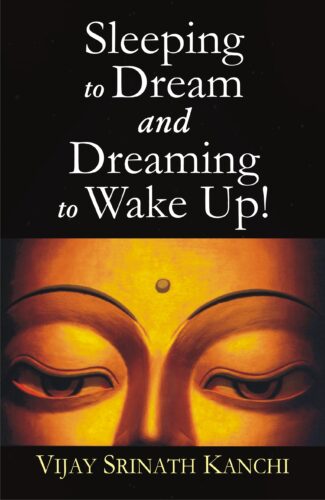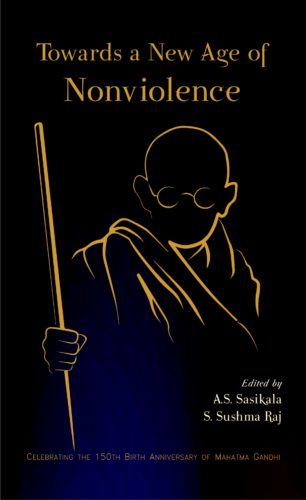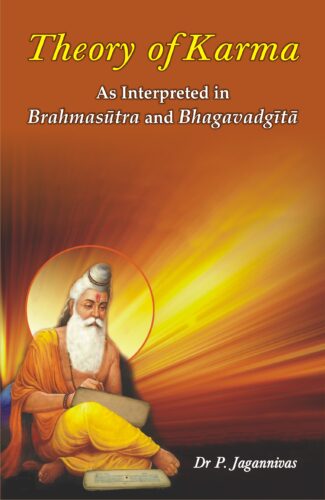-


Brahman and the Worl...
Brahman and the World
by: Ashokanath Battacharya SastriThe Ved?nta has been rightly called the Finest Fruit of Indian Thought and the Upani?ads as the Finer Flowers. Ved?nta grows out of the teachings of the Upani?ads and passes into the various systems in the writings of ?a?kara, Bh?skara, R?m?nuja, Madhva and Vallabha, the great founders of Advaita, Bhed?bheda, Vi?i???dvaita, Dvait?dvaita and ?uddh?dvaita, respectively. However, there is a perception among Orientalists that while the Upani?ads favour the Monistic doctrine, B?dar?ya?as Brahmas?tra fundamentally opposes it on some of the most crucial points.
The book thus delves deep into the philosophies of both B?dar?ya?a and ?a?kara in enunciating the essential features of Brahman and Its association with the world. It thus discusses topics such as what sort of cause Brahman is?, and what sort of material causality is to be ascribed to It? It also addresses the conflicting views on the nature of Brahman like that of Vivarttav?da and of R?m?nujas Sagu?a-Brahman.
This book proposes to take up the question of Universal Causation to examine thoroughly as how far it is right to regard Brahman as the Universal Cause and how far s?trak?ra himself lent his support to each of the inter-conflicting schools of Ved?nta. This book should, therefore, benefit all who are devoted to the philosophic teachings of Advaita Ved?nta and its preceptors.
₹450.00
ISBN: 9788194622109
Year Of Publication: 2020
Edition: 1st
Pages : xi, 118
Language : English
Binding : Hardcover
Publisher: Shakti Publications
Size: 23
Weight: 368
“The Vedānta has been rightly called the Finest Fruit of Indian Thought and the Upaniṣads as the Finer Flowers. Vedānta grows out of the teachings of the Upaniṣads and passes into the various systems in the writings of Śaṅkara, Bhāskara, Rāmānuja, Madhva and Vallabha, the great founders of Advaita, Bhedābheda, Viśiṣṭādvaita, Dvaitādvaita and Śuddhādvaita, respectively. However, there is a perception among Orientalists that while the Upaniṣads favour the Monistic doctrine, Bādarāyaṇa’s Brahmasūtra fundamentally opposes it on some of the most crucial points.
The book thus delves deep into the philosophies of both Bādarāyaṇa and Śaṅkara in enunciating the essential features of Brahman and Its association with the world. It thus discusses topics such as what sort of cause Brahman is?, and what sort of material causality is to be ascribed to It? It also addresses the conflicting views on the nature of Brahman like that of Vivarttavāda and of Rāmānuja’s Saguṇa-Brahman.
This book proposes to take up the question of Universal Causation to examine thoroughly as how far it is right to regard Brahman as the Universal Cause and how far sūtrakāra himself lent his support to each of the inter-conflicting schools of Vedānta. This book should, therefore, benefit all who are devoted to the philosophic teachings of Advaita Vedānta and its preceptors.”
Contents
Message
— His Holiness The Dalai Lama
Preface to the Second Edition
Introduction
1. Sarvadarśikā
2. Dialogue and Monologue with Kapilaji
— Baidyanath Saraswati
3. A Letter to Kapila Vatsyayan
— Michael Meschke
4. The Invention of Space
— David Park
5. Autonomy and Wholeness: Reflections on Creativity and
Self-expression
— S.C. Malik
6. The Learning of the Imagination
— Kathleen Raine
7. Higher States of Consciousness in East and West
— Peter Malekin
8. Seeing Time in the Indian Miniature
— Jim C. Masselos
9. A Gurjara-Pratihāra Image of Viṣṇu Viśvarūpa
— T.S. Maxwell
10. Mudrā: Its Metaphysical Basis in Kashmir Śaivism
— Bettina Bäumer
11. Radiance as an Aesthetic Value in the Art of Mesopotamia
(With Some Indian Parallels)
— Irene J. Winter
12. Art and Meditation: Traditional Imagery and Contemporary
Parallels as Seen Through Children’s Meditational Art
— Madhu Khanna
13. The Compleat Devotee and the Cosmic City: Hanuman at Hampi
— John Mckim Malville
14. Art and the Topology of Being: Introducing a Threefold
Homage to Kapila Vatsyayan
— André Scrima
15. Sergiu Al-George and the Romanian School of indology
— Radu Bercea
16. Museum of the Future: The Project Gīta-govinda
— Ranjit Makkuni
17. Kr̥ṣṇa-līlā in Temple Art of Khajurāho
— Devangana Desai
18. Goddess Cybele in Hindu Śākta Tradition
— M.C. Joshi
19. The Formation of Medieval Style in Malwa Region
(A Presentation of Hiṅglajgarh Sculptures)
— Ratan Parimoo
20. The Buddhist Bronzes of Surocolo
— Lokesh Chandra and Sudarshana Devi Singhal
21. What Is Deśī About Br̥ahaddeśī?
— Prem Lata Sharma
22. “No Dance, and There is Only the Dance”: Dance and the Indian Arts
— Sehdev Kumar and Aaloka Mehndiratta
23. The King, the Boar and the Waterhole: An Oral Narrative
about the Recreation of Puṣkara
— Aditya Malik
24. The Membrane of Tolerance: Middle and Modern India
— Michael W. Meister
25. Is Religion a Human Invariant?
— Raimon Panikkar
26. A Question of Human Future
— Keshav Malik
27. India and the Future Culture of Man: A Search for
New Perspectives
— Meera Aster Patel
Notes on Contributors
Index






